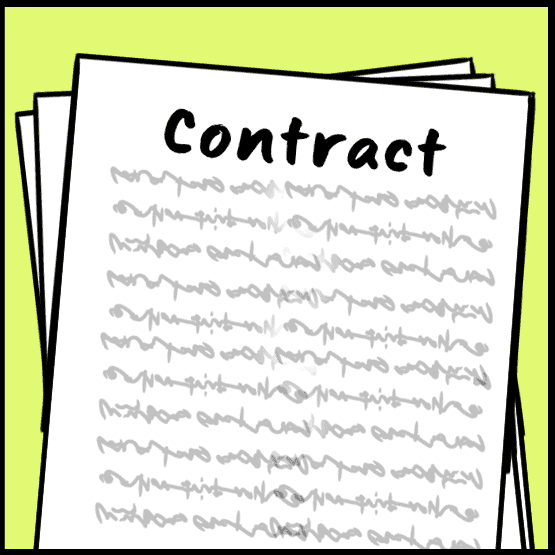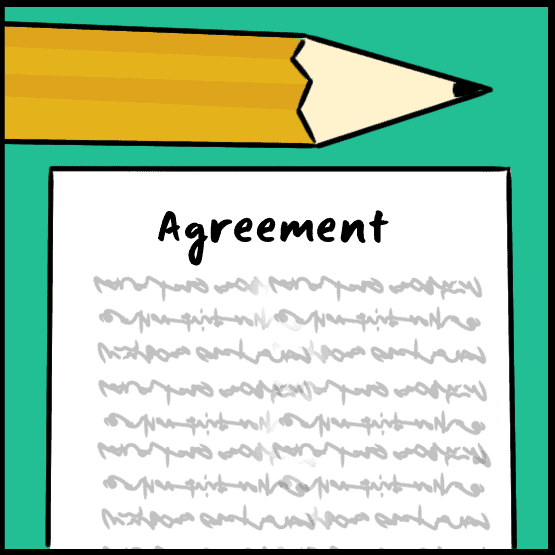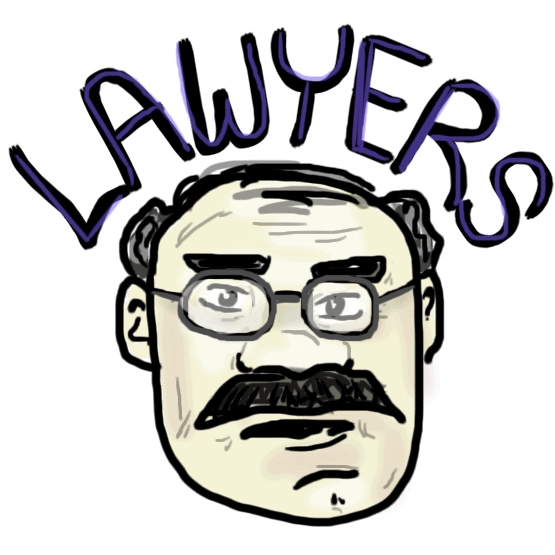How to Prepare Professional Interior Design Contracts

How to prepare a good Interior Design Contract
This article is written for interior designers and decorators who want to learn how to prepare a simple design contract for their clients.
What elements do you need to write a successful interior design contract?
- Statement of Work: What does the client want the designer to do, and how much is the client willing to pay?
- Changes to Project Scope: Account for any changes in the scope of work after work has commenced and how to address such a situation.
- Project Timeline: Set a timeline for project completion. This might have to be broken into project completion stages.
- Approval Process: Think about the approval process at each stage of the design development–from plans to actual design to finished product.
- Budget: Set this early on and make room for potential budget changes.
- Failure to Pay: Decide what happens if mistakes happen or the client fails to pay.
- Termination: How can the contract be terminated?

Standard Clauses
When you start drafting your interior design contract, you want to think about every possible scenario that might come up that could affect the progress of the project.
One way of avoiding any rough patches is by clearly setting out your most basic responsibilities as a designer. Indicate the standard of care you bring to your work, and inform the client that you will perform in a professional and workmanlike manner.
See Article 1 for sample language here.
Scope of Interior Design Services
This clause forms the meat of the agreement. It explains what is expected of the designer and how to go about fulfilling each of these expectations.
Typically, this section is divided into three separate phases: (i) Conceptual Phase (ii) Design Development, and (iii) Contract Administration.
Another way of dividing the scope of work is by (i) Initial Stage, (ii) Intermediate Stage, and (iii) Final Stage. It’s not mandatory to use sections but they can help relay the project’s expectations to the client.
Here are examples of how this might be written–
First Stage: Conceptual Phase/Initial Stage
The conceptual phase is where the designer first meets with the client to define the client’s needs and expectations. It helps both parties arrive at a clearly defined and feasible plan of action. This part of the contract will assess:
- The need for the designer to consult with the client to figure out the client’s needs and assist with preparing the project’s budget.
- Figuring out the space allocation needs and how to effectively use the space for a specific function.
- How many meetings the designer and client will need before the designer begins creating plans and drawings for the design project.
- How sketches for floor plans, sections, elevations, etc. will be developed.
Practical Considerations:
- Your initial meeting with a design client should be one that discusses the client’s proposed design needs. Have your client show you the space where he wants you to perform your services–take account of lighting, fixtures, outlay, existing furnishings, etc.
- Think about the following: interior furnishings, lighting, color scheme, fabrics, or anything else that is to be included in your services. Be prepared to work with other consultants if you need to. For instance, lighting may not be your expertise, yet you may have a certain lighting idea that fits well with the overall design idea that you have for the interiors.
- For the client–have you asked the designer for a copy of his license, portfolio, and past client recommendations?
Second Stage: Design Development/Intermediate Stage
Interior Design & Development
This is where the designer begins developing concrete plans and drawings based on the client’s feedback. While drafting this clause, think about the following:
- How much the designer will be paid for the plans, drawings, etc. that he creates.
- How many revisions of the plans the designer will make before you begin charging the client extra for revisions?
- How the designer has complete ownership of the plans, drawings, etc. that he creates.
- The timeline for this stage and the proper budget.
- To what extent the client is going to be involved during this phase?
- Use of personnel or consultants: Are other subcontractors going to be involved and if yes, does the client need to approve their use?
Merchandise/Furniture Specification
In order to put your plan into action, the designer and the client will need to figure out the following:
- Who is in charge of purchasing merchandise and furnishings? Client or designer?
- Is the client going to purchase directly from the designer?
- What is the budget for furniture purchases? As a designer, have cost estimates ready for each of the furnishings that might be installed. Have your client approve all of these estimates before proceeding with the actual purchase. You want to account for this approval process in your contract timeline.
- Have you thought about shipping and the labor involved in setting up furnishing once it has arrived? Who is responsible to pursue claims against carriers for damages? (Probably the person who ordered it) How are damages to furniture going to affect the project timeline?
- Are you going to be paid before or after each purchase? One way of setting this up is being paid 90% upfront for the purchase and 10% on delivery.
- If the client chooses to purchase all merchandise and furniture, will the designer advise him on the purchases? At what fee?
- Are you designing custom furniture for the client?
Sample Language here.
Third Stage: Contract Administration/Final Stage
When the designer’s vision is put into effect, the supervision of many moving parts will be required. This may include delivery, purchase, or installation of furniture, fixtures, equipment, etc. This part of the contract guarantees the designer’s full cooperation and assistance in facilitating the smooth progress of the design project.
How is the designer involved at this stage?
- Designer will assist client in getting competitive bids for furnishings and merchandise. This is pretty obvious because the designer probably has better connections to furniture wholesalers.
- Designer will assist client in coordinating the schedule for delivery and pick up.
- Client will conduct periodic visits to the project site to ensure designer is proceeding as per the specifications submitted.
- Designer will help supervise furniture installations and other installations.
- Upon completion, designer will provide client with a checklist of items comparing installations and set-up that are finished versus those that are not and need immediate attention.
Other Considerations:
Figure out how many meetings you will need to overcome the following issues:
- Issue 1: Overbearing client who inhibits the creative expression and interferes at every stage of project development. With such a client, you might draft language that requires the client to check in every week or after every stage of development. That way, the client is happy with your overall progress.
- Issue 2: Nonchalant client who steps in at the last minute, hates the progress of the project, and wants you to start over. Scheduling meetings to show the client progress can help avoid issues with “you promised me this…but you gave me something else.” Have your client tune in at every stage of project development.
Contractual Questions to Ask:
- Is the workload reasonable? That is, does the client require you to do something that may be outside the scope of your license or statement of work? If yes, you want to raise an objection to it early on.
- Does the contract require services not usually provided, such as acoustical engineering or the submittal of CADD files?
- Should there be cost estimates at each stage? As a client, you probably want the designer to give you a full breakdown of the project so you know exactly how much it is going to cost you. For the client, this estimate could constantly change. Leave enough wiggle room in the interior design contract for such a situation. One way is to have the client’s prior written consent for any fluctuations in price.
Getting Paid
Miscommunication happens when you assume the client knows something they don’t. Make clear what services and expenses are within your project’s scope. Assumptions ruin client relationships.
Billing is a beautiful thing, and there are 100 ways for you to get paid. It’s really up to you! Some examples are fixed price, hourly, project payments, big 70% deposit, and smaller project billing in stages. You want to make sure your contract is very clear in your billing terms. When payment is due, what happens if they’re late on a payment?
Out of Scope Charges
- Anything that is required by the client outside of the “scope of services” will be invoiced separately at $_____/hour. For example, your client is unhappy with the plans you have developed. You have already revised the plans three times. Will you begin charging the client for the fourth revision? If yes, at what rate?
- Reimbursable expenses will be charged separately. For example: Will the designer be required to hand pick furniture from out of town? If so, who is responsible for paying your flight and hotel expenses?
The “What If’s”
Your contract should ask the following questions:
- What if the project extends longer than scheduled?
- What if the budget changes?
- What if the client alters the program?
- What if the furniture is found to be defective?
Accounting for the “what if’s” is important. You want to be paid no matter what!!
Termination
Termination is rather straightforward–whether you are a designer or a client, you want to be able to terminate the contract if something goes wrong. At the same time, you do not want to let the project die because a mistake occurred that could be easily fixed.
How do you account for this?
- Termination is allowed on either party’s default. What is default? It could relate to a party defaulting on a promise they made under the contract.
- Some interior design contracts are drafted in such a way that they permit either party to terminate the agreement “at-will” or for any reason–all that is required is written notice from the party that proposes to terminate the contract.
- On termination, anything that occurred before termination is good–that is, the designer must be compensated for work already performed, including any purchases already made or orders currently pending.
- Parties can choose to allow for a 30-day “cure” period–if either party finds that the other party defaulted, give that party written notice of default and allow them to cure the default within 30 days. After 30 days, the contract is terminated.
- For the designer (or client), have your client sign a release on termination. A release prevents the client from pursuing future legal action against you in relation to your recently terminated contract.

Miscellaneous Considerations
This section of the contract is a miscellaneous section that accounts for any issues that could come up between the designer and the client.
- The designer is not responsible for the appearance, quality, or workmanship of any products that were not purchased by the designer.
- If the client desires to change anything, it is the client’s responsibility to inform the designer of the proposed changes in writing.
- The designer is not responsible for any project completion that is conducted by a third party not directly hired by the designer.
- After Project Completion: The designer wants to be able to take pictures of the completed project to add to the designer’s portfolio. Make sure to include this right in your contract.
- Any interruption not caused by the designer and not directly due to the designer’s fault should be accounted for. The designer should be entitled to extra time to complete the project and should not be held responsible for project delays.
- Should the designer require an extension of time, the client promises to consent to such an extension. The first request for extension can be at no consequence, while any extension after that can be consented to with a penalty. This way the designer is allowed some wiggle room but at the same time, the client is protected from unnecessary delays.
- The client will require the designer to have commercial liability (errors or omission insurance) and automobile insurance, as well as workers’ compensation liability coverage to account for any injuries that might occur during the course of the project.
- Figure out who is responsible for procuring permits, licenses, or other permissions that might be needed to complete the design project.
For a designer, a clearly written contract is a valuable tool. It will prevent miscommunication between you and your client, protect you from unreasonable requests or delays that aren’t your fault, and ensure you are paid for your hard work.
We recommend you hire an attorney to help you with your legal documents and/or use legal document services like Docracy and LawDepot.
DISCLAIMER: This article is just friendly advice and only reflects the personal views of a few ‘ordinary’ people. It may not be the kind of advice that you agree with, nor prove to be helpful for your situation. This article is not a substitute for legal advice from an attorney in your own state. By using this website, you understand that there is no attorney-client relationship between you and the author. We encourage comments and viewpoints but try to be nice!
Read On…





